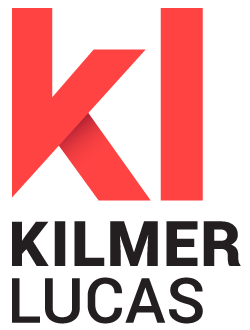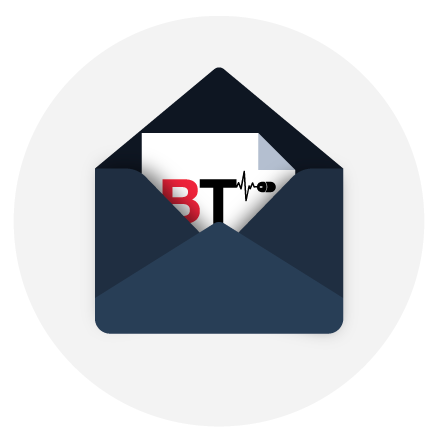As CEO of closely-held Oncimmune, an early cancer diagnostic company in Britain, Geoffrey Hamilton-Fairley has had a personal commitment to cancer detection. His father was the first medical oncologist in the UK and an original adopter of chemotherapy. Early on, Mr. Hamilton-Fairley chose a different career path, even though he obtained an Honors degree in human biology at university. He became a serial entrepreneur and in 1982, founded a number of companies in Britain’s media sector. Over the past 10 years, though, he has increasingly focused on the health care sector, and has dedicated almost all of his time in the past five years to the development of Oncimmune. In this interview with BioTuesdays.com, Mr. Hamilton-Fairley discusses the company’s EarlyCDT platform technology, its lead product for the early detection of lung cancer, pipeline projects and early results from the largest National Health Service study of lung cancer screening, which is using Oncimmune’s EarlyCDT-Lung blood test.
Let’s begin with a brief history of Oncimmune.
We were spun-out from the University of Nottingham in 2002 and established our proof-of-concept data with a cancer-specific immune signal in 2005, which led to our first external investment round. I became involved at the end of 2005 and brought in the money along with three health care investors from Goldman Sachs. By 2009, we had developed and validated our commercial test for early detection of lung cancer. Over the next three years, we established a CLIA-approved lab in Kansas to test market EarlyCDT-Lung, ran 120,000 patient samples, obtained Medicare reimbursement and launched the test in July 2012.
Can you explain the EarlyCDT technology?
When a tumor is present in the body, it produces abnormal antigens and the body reacts by producing autoantibodies. EarlyCDT-Lung measures a panel of specific autoantibodies to detect the presence of lung cancer. Our autoantibody assay technology can detect cancers up to four years earlier than other methods and is complementary to other technologies, such as CT scan. It can also be applied to a wide range of solid tumor types. EarlyCDT has been extensively validated, demonstrating 90%-plus accuracy, with high specificity at 93%. Eight patent families, consisting of 223 issued patents and 30 pending patents, protect the technology.
How is EarlyCDT-Lung different from other methods of cancer detection?
Currently, most lung cancer cases are only detected once symptoms appear and usually in later stages of the disease. Detecting a panel of autoantibodies facilitates the potential to detect cancer early in tumor development, giving the patient more treatment options with subsequent improved prognosis. Current methods of cancer detection, including X-ray and CT scan, also involve radiation exposure. EarlyCDT-Lung is designed to indicate the presence of cancerous cells in the body at any stage, not your likelihood of developing cancer in the future, which is what genetic testing is looking for. Moreover, there is no standardized genetic testing for lung cancer.
How accurate is EarlyCDT-Lung?
We have demonstrated that our overall accuracy in the early detection of lung cancer is greater than 91%. Moreover, we have a positive predictive value that is five times better than CT scan, we have seven times fewer false positives than CT scan and a five times greater risk of lung cancer implied by EarlyCDT-Lung test scores that are moderate or high. The test is important to individuals who are at risk of lung cancer because of age, gender, smoking history, environmental risks and family history.
Tumors produce abnormal antigens and the body reacts by producing autoantibodies. Early CDT-Lung measures specific autoantibodies to detect the presence of lung cancer.
What are some benefits of early cancer detection?
There are more than 20 million smokers in the U.S. and lung cancer is the No. 1 killer, with more than 220,000 new cases diagnosed annually. Patients with early-stage lung cancer, when a tumor is small and has not spread, can have a five-year survival rate as high as 90%. If lung cancer is detected late, the five-year survival drops to 17%. However, almost 80% of lung cancer is diagnosed after the tumor has spread. In breast cancer, in comparison, the five-year survival rate is above 80%, if detected early, and in colorectal cancer, early detection can result in a five-year survival rate of more than 90%.
Oncimmune’s technology can detect cancers up to four years earlier than other methods, and is complimentary to other technologies.
Last week, you reported early results from an NHS lung cancer screening trial of 10,000 high-risk smokers, using EarlyCDT-Lung. Can you elaborate on the significant findings?
The study is the largest randomized trial for the early detection of lung cancer using biomarkers ever conducted and the final results may enable the adoption of EarlyCDT-Lung screening by other countries. These are the initial results so they have to be treated with some caution but the sensitivity rate at 81% is greater than we expected, even at this stage. The most encouraging outcome is not how many cancers you detect, or sensitivity, but how many early-stage cancers you detect. That’s what saves lives in the long run. This data is showing that we are detecting 80% of Stage 1 and 2 lung cancers, compared with 30% in a normal risk population that is not screened. As a result, the cancers in these patients can be resected long before they metastasize. In addition, the positivity rate is as expected at 91%, which indicates specificity, or the false positive rate, is in line with our other studies at 93%. We are pleased by the initial results of this independent study, which support a wealth of data on the use of autoantibodies in cancer detection and are consistent with our previous EarlyCDT-Lung validation studies. If these results continue, it will further underpin the rationale of the study, namely that screening with the EarlyCDT-Lung blood test can be effective for the early detection of lung cancer, helping to save lives and money. However, it should be noted that another 2,000 high-risk patients will be enrolled in early 2016, with full results available after two years of follow up.
Innovative Diagnostic Laboratory has been licensed to sell EarlyCDT-Lung in the U.S. How has the performance been?
Since January 2014, IDL has been selling the test with a positive or negative result but the lab is now moving to a three-tier result: high, moderate and low. This is important because high results will warrant rapid intervention, which leads to better outcomes. The test has been received well in the U.S. and UK and now other countries. There are great benefits in the fact that it is a simple blood test, which identifies those who should go on to have already recognized further investigation. In the case of lung cancer, this is normally a CT. This saves money and patient concern as only about 10% of patients go on to have further follow up and for those that do they know that there is a good chance of catching the cancer early.
What do you have in the EarlyCDT pipeline?
We expect to have an EarlyCDT-Liver test available by the end of 2016. Liver cancer is one of the few cancers that is increasing in incidence in the U.S. because of the maturation of people infected with hepatitis B and C viruses and an increasing prevalence of fatty liver disease, which is emerging as a leading cause of cirrhosis. Currently, the alpha-fetoprotein (AFP) blood test is used to detect liver cancer but its use is on the wane because of a lack sensitivity and specificity. We expect to double the performance of the AFP test at a similar cost.
Our EarlyCDT-ovarian test should follow in 2017. The biomarker now used to detect ovarian cancer is CA 125, which is present in greater concentration in ovarian cancer cells that in other cells in the body. Our test incorporates CA 125 but its performance is twice that of the current standard of care.







